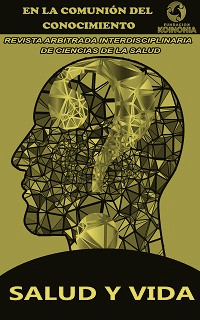Incidence of biohazards using the biogaval neo 2018 method in private clinical laboratories
DOI:
https://doi.org/10.35381/s.v.v7i2.3494Keywords:
chemical contamination, biological contamination, health care (Public Health), (Source: DeCS)Abstract
Objective: to evaluate biological risks by applying the BIOGAVAL neo 2018 method in private clinical laboratories in Ambato - Ecuador. Method: Descriptive observational. Results and conclusions: From the BIOGAVAL method, in the private clinical laboratories of Ambato, where 4 biological agents were identified, having HIV with NAB of 9, Influenza virus with a NAB value of 8, SARS-CoV-2 virus with a NAB of 10, Staphylococcus Aureus with a NAB of 9, These are pathogens that produce serious diseases for humans, although it should be taken into account that none of them exceeds the biological exposure limit, so preventive actions should be improved to reduce the risk of biological exposure.
Downloads
References
Beltrón Macías FE. Riesgos biológicos en laboratorios clínicos de la ciudad de Portoviejo mediante el método Biogaval [Biological risks in clinical laboratories in the city of Portoviejo using the Biogaval method]. RSAN [Internet]. 2020;1(40).
Aguado Vázquez Á, Gegúndez Hernández H, Melgosa Ramos FJ, Díaz Corpas T. Diagnosis and Clinical Characteristics of Scabies in a Tertiary Care Hospital During the SARS-CoV-2 Pandemic: A Descriptive Study. Prevalencia y características clínicas de pacientes diagnosticados de escabiosis durante la pandemia producida por el coronavirus de tipo 2 causante del síndrome respiratorio agudo (SARS-CoV-2) en un hospital de tercer nivel. Un estudio descriptivo. Actas Dermosifiliogr. 2023;114(2):171-172. doi:10.1016/j.ad.2022.05.017
Elizondo-Zapién RM, Palacios-Saucedo GDC. Cir Cir. 2020;10.24875/CIRU.20000737. doi:10.24875/CIRU.20000737
Torres-López J. Sobre posibles medicamentos para tratar la infección por SARS-CoV-2, causante de la COVID-19: ¿hay alguna esperanza? [About possible medications to treat SARS-CoV-2 infection, which causes COVID-19: is there any hope?]. Rev Med Inst Mex Seguro Soc. 2020;58(3):226-228. Published 2020 May 18. doi:10.24875/RMIMSS.M20000023
Cedillo-Alvarez C, Gallardo-Ortiz IA, López LT, Montes S, Páez-Martínez N. COVID-19: a basic approach to understanding potential treatments. COVID-19: enfoque básico para entender sus tratamientos. Gac Med Mex. 2020;156(6):570-575. doi:10.24875/GMM.M21000459
Pérez-Díaz Y, Pedroso-Ramos L, Pérez-Santoya L. Evaluación del riesgo biológico en laboratorio clínico aplicando el método BIOGAVAL [Biological risk assessment in clinical laboratories using the BIOGAVAL method]. Medimay [Internet]. 2020; 27 (2)
González-Alcaide G, Menchi-Elanzi M, Bolaños-Pizarro M, Gutiérrez-Rodero F, Ramos-Rincón JM. Bibliometric and thematic characterization of the research on HIV-AIDS in Spain (2010-2019) [published online ahead of print, 2023 Apr 6]. Enferm Infecc Microbiol Clin (Engl Ed). 2023;S2529-993X(23)00099-0. doi:10.1016/j.eimce.2023.03.006
Traeger MW, Cornelisse VJ, Asselin J, et al. Association of HIV Preexposure Prophylaxis With Incidence of Sexually Transmitted Infections Among Individuals at High Risk of HIV Infection. JAMA. 2019;321(14):1380-1390. doi:10.1001/jama.2019.2947
Wolter N, Jassat W, Walaza S, et al. Early assessment of the clinical severity of the SARS-CoV-2 omicron variant in South Africa: a data linkage study. Lancet. 2022;399(10323):437-446. doi:10.1016/S0140-6736(22)00017-4
Kalil AC, Thomas PG. Influenza virus-related critical illness: pathophysiology and epidemiology. Crit Care. 2019;23(1):258. doi:10.1186/s13054-019-2539-x
Lippi G, Adeli K, Ferrari M, et al. Biosafety measures for preventing infection from COVID-19 in clinical laboratories: IFCC Taskforce Recommendations. Clin Chem Lab Med. 2020;58(7):1053-1062. doi:10.1515/cclm-2020-0633
Chen CC, Chi CY. Biosafety in the preparation and processing of cytology specimens with potential coronavirus (COVID-19) infection: Perspectives from Taiwan. Cancer Cytopathol. 2020;128(5):309-316. doi:10.1002/cncy.22280
Pambuccian SE. The COVID-19 pandemic: implications for the cytology laboratory. J Am Soc Cytopathol. 2020;9(3):202-211. doi:10.1016/j.jasc.2020.03.001
Lamas NJ, Esteves S, Alves JR, et al. The Anatomic Pathology laboratory adjustments in the era of COVID-19 pandemic: The experience of a laboratory in a Portuguese central hospital. Ann Diagn Pathol. 2020;48:151560. doi:10.1016/j.anndiagpath.2020.151560
Loh TP, Horvath AR, Wang CB, et al. Operational considerations and challenges of biochemistry laboratories during the COVID-19 outbreak: an IFCC global survey. Clin Chem Lab Med. 2020;58(9):1441-1449. Published 2020 Jun 4. doi:10.1515/cclm-2020-0710
Published
How to Cite
Issue
Section
License
Copyright (c) 2023 Maritza Alejandra Quesada-Cevallos, Mario Fernando Rivera-Escobar, Raúl Comas-Rodríguez, Diego Armando Flores-Pilco

This work is licensed under a Creative Commons Attribution-NonCommercial-ShareAlike 4.0 International License.
CC BY-NC-SA : Esta licencia permite a los reutilizadores distribuir, remezclar, adaptar y construir sobre el material en cualquier medio o formato solo con fines no comerciales, y solo siempre y cuando se dé la atribución al creador. Si remezcla, adapta o construye sobre el material, debe licenciar el material modificado bajo términos idénticos.
OAI-PMH: https://fundacionkoinonia.com.ve/ojs/index.php/saludyvida/oai.









